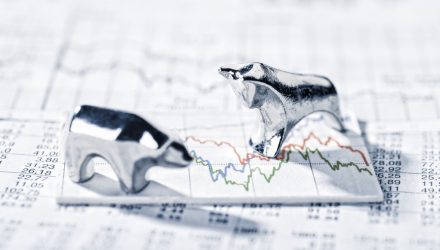While the equity markets rallied, the CBOE Volatility Index and VIX-related exchange traded remain elevated, reflecting traders’ lingering fear.
Over the past three months, the iPath Series B S&P 500 VIX Short Term Futures ETN (NYSEArca: VXX) fell 23.1% and the ProShares VIX Short-Term Futures ETF (NYSEArca: VIXY) dropped 23.4% while the CBOE Volatility Index dipped to its current 28.8 level. Nevertheless, the VIX remains above its long-term trend line at the 200-day simple moving average and is 41% above its historical average while VXX is still up 120.8% and VIXY is 119.5% higher year-to-date.
Investors are continuing to bet on big oscillations in the markets even as benchmark indices push toward record highs. While the VIX has pulled back from the highs during the height of the coronavirus selling, the persistently elevated VIX levels reflect investor fears of further volatility in the S&P 500.
“Today’s level for the Vix is perfectly indicative of how uncertain this situation is,” Randy Frederick, vice-president of trading and derivatives at Charles Schwab, told the Financial Times. “One of the challenges of this environment is that we are all basically trying to fit historical models and patterns [on to]today’s scenario. The reality is the scenario today is unique.”
The Federal Reserve’s loose monetary policy and the U.S. federal government’s copious fiscal stimulus measures have helped support the economy ravaged by the Covid-19 outbreak and fueled the quick rebound in U.S. equities, with the tech-heavy Nasdaq Composite at record highs while the S&P 500 is just below its all-time high.
Nevertheless, Kristina Hooper, chief global market strategist at Invesco, argued that fears have kept the VIX elevated compared with historical norms, which is being reflected in other markets like government bonds. For instance, the yield on the benchmark 10-year Treasury bond remains close to a record low of 0.67%, reflecting persistent demand for safe-haven assets. Meanwhile, gold has also rallied 18% this year and was near its highest level since 2011 on growing defensive posturing.
As the economic damage from the outbreak becomes clear, “there is a fear of fundamentals ruining the party,” Hooper told the Financial Times.
For more information on the markets, visit our current affairs category.
